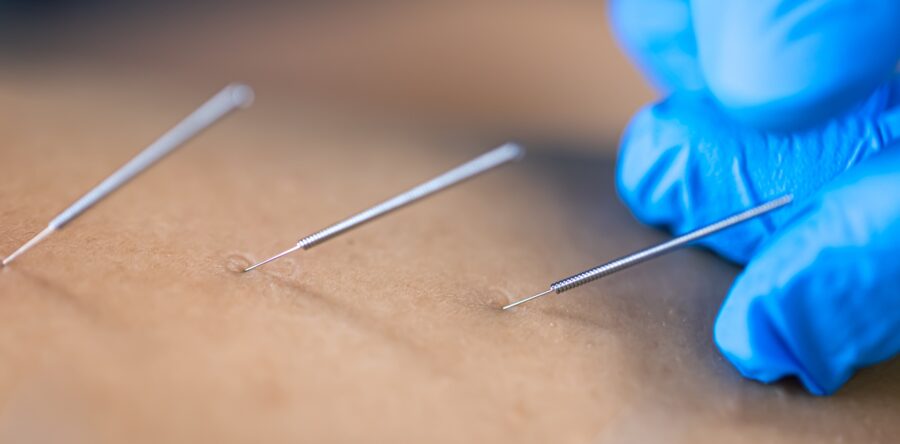Chronic pain, muscle tension, and stubborn injuries can be physically and mentally demanding, often impeding our daily lives and impinging on our well-being. While traditional methods like massage, stretching, and rest can provide some relief, certain cases may call for more specialized treatments.
Dry needling is an advanced physiotherapy technique that can target the root cause of discomfort, stimulate healing, and lead to lasting relief. As an innovative and effective method, dry needling can be especially beneficial for those struggling to recover from stubborn injuries and persistent pain.
At Whitehorse Physiotherapy, our team of highly trained professionals is well-versed in the technique of dry needling, providing a valuable tool to address chronic pain, muscle imbalances, and tension-related issues.
With a focus on safe and effective treatments tailored to each individual's needs, dry needling can play a pivotal role in your pain management and recovery journey. In this article, we will dive deep into the world of dry needling, discussing its history, mechanisms of action, and diverse applications for treating various musculoskeletal issues.
Whether you are just beginning your journey into the world of dry needling or seeking an innovative approach to managing pain and promoting healing, this comprehensive guide will equip you with invaluable insight into this remarkable therapy. So, let's venture together into the world of dry needling and begin unlocking its potential for transformative healing and lasting relief.
A Brief History and Background of Dry Needling
Dry needling has its roots in Western medicine, with its earliest documentation dating back to the early 20th century when researchers first started to explore the concept of trigger points and their relationship to musculoskeletal pain. Trigger points are tight, tender areas within muscle tissue that can cause pain or discomfort in both the local area and other parts of the body. Dry needling targets these trigger points using fine, sterile needles, which can stimulate healing, reduce inflammation, and provide relief from pain.
While dry needling shares some similarities with acupuncture, it is important to note that they are distinct therapies with different origins and principles. Acupuncture, rooted in traditional Chinese medicine, is based on the belief that energy (or qi) flows through the body along specific pathways called meridians. In contrast, dry needling, a modern therapy, has its foundation in the study of myofascial trigger points and their impact on various musculoskeletal issues.
The Science Behind Dry Needling: How Does It Work?
Dry needling works by targeting the tight, tender areas of muscle known as trigger points that contribute to pain and dysfunction within the musculoskeletal system. The therapy uses fine, sterile needles to penetrate the skin and muscle, aiming to elicit a 'twitch response' from the trigger point. This response helps to:
- Reduce Muscle Tension: The twitch response can release tight muscle fibers, improving flexibility and relieving pain.
- Increase Blood Flow: Dry needling stimulates blood flow to the targeted area, enhancing the body's natural healing process.
- Improve Communication within the Nervous System: The stimulation provided by dry needling can help to restore proper levels of communication between the nervous system and the muscles, potentially addressing imbalances and improving coordination.
Overall, dry needling can play an important role in reducing pain, enhancing the healing process, and improving musculoskeletal function.
Applicable Conditions: When Dry Needling Might Be the Answer
Dry needling can be an effective tool for addressing a wide range of musculoskeletal issues. Some common conditions that can benefit from dry needling include:
- Chronic Pain: Conditions such as fibromyalgia, lower back pain, or neck pain can respond well to dry needling as it targets trigger points contributing to discomfort.
- Muscle Tension and Imbalances: Whether from poor posture, overuse, or injury, muscle imbalances can lead to discomfort or impaired function. Dry needling can help to release tension and restore balance within the musculoskeletal system.
- Sports Injuries: Athletes suffering from muscle strains, sprains, or tendonitis can benefit from the enhanced healing and reduced inflammation provided by dry needling.
- Headaches and Migraines: Dry needling can be effective in addressing tension headaches and migraines, as it targets the tight, tender muscle points contributing to pain.
If you are experiencing any of these conditions, it is essential to consult with a trained healthcare practitioner to determine if dry needling might be a beneficial addition to your treatment protocol.
Your Experience with Dry Needling: What to Expect
The thought of needles can be intimidating for many; however, dry needling is generally a well-tolerated and safe procedure. Here's what you can expect during a dry needling treatment:
- Consultation: Your physiotherapist will first conduct a comprehensive assessment to determine if dry needling is an appropriate treatment option for your specific needs.
- Treatment: The practitioner will insert fine, sterile needles into the identified trigger points. You may feel a small pinch or muscle twitch in response. The needles typically remain in place for a short period, while contractions and relaxation cycles are stimulated.
- Post-treatment Effects: Some patients may experience mild soreness, tenderness, or bruising following a session, but these typically subside after a few days.
It is important to remember that individual experiences may vary, and open communication with your healthcare practitioner is essential to ensure your comfort and optimal treatment outcomes.
Dry Needling – A Gateway to Pain Relief and Enhanced Recovery
Dry needling is an innovative and powerful tool for managing pain, promoting healing, and addressing a wide variety of musculoskeletal issues. By targeting the root cause of discomfort and optimizing the body's natural healing processes, dry needling can offer lasting relief and enhanced recovery. At Whitehorse Physiotherapy, our team of skilled professionals is ready to guide you through this dynamic therapy, providing personalized care tailored to your unique needs and goals.
Are you looking for effective pain management and recovery solutions? Contact Whitehorse Physiotherapy and discover the benefits of dry needling! Our experienced physiotherapists in Whitehorse can help you alleviate pain, improve mobility, and speed up the recovery process. Whether you're dealing with chronic pain or recovering from an injury, dry needling can help. Contact us today to schedule a consultation and learn more about our services. Let Whitehorse Physiotherapy be your partner in pain management and recovery with our dry needling therapy.





